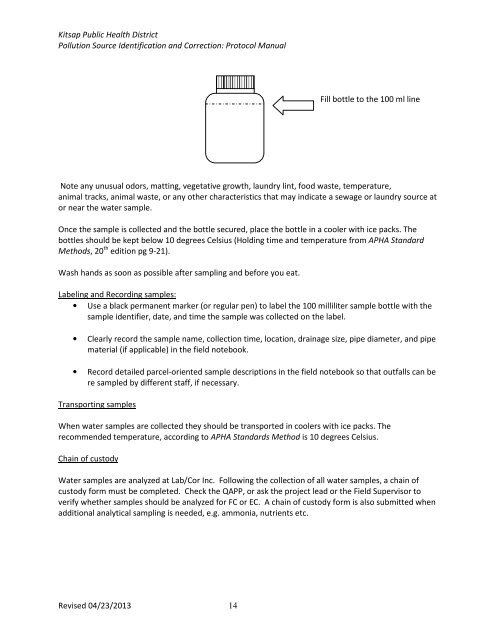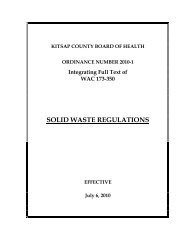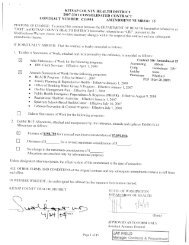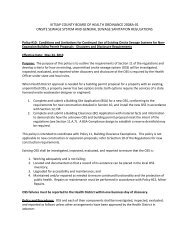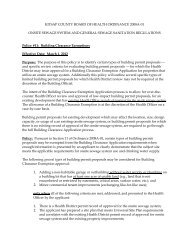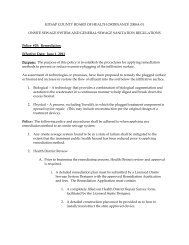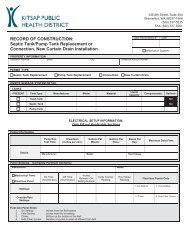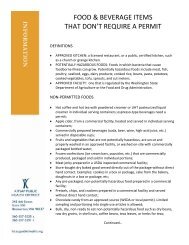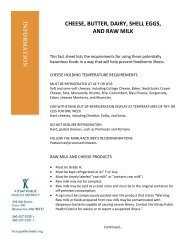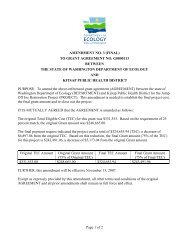(PIC) Protocol Manual - Kitsap Public Health District
(PIC) Protocol Manual - Kitsap Public Health District
(PIC) Protocol Manual - Kitsap Public Health District
Create successful ePaper yourself
Turn your PDF publications into a flip-book with our unique Google optimized e-Paper software.
<strong>Kitsap</strong> <strong>Public</strong> <strong>Health</strong> <strong>District</strong><br />
Pollution Source Identification and Correction: <strong>Protocol</strong> <strong>Manual</strong><br />
Fill bottle to the 100 ml line<br />
Note any unusual odors, matting, vegetative growth, laundry lint, food waste, temperature,<br />
animal tracks, animal waste, or any other characteristics that may indicate a sewage or laundry source at<br />
or near the water sample.<br />
Once the sample is collected and the bottle secured, place the bottle in a cooler with ice packs. The<br />
bottles should be kept below 10 degrees Celsius (Holding time and temperature from APHA Standard<br />
Methods, 20 th edition pg 9-21).<br />
Wash hands as soon as possible after sampling and before you eat.<br />
Labeling and Recording samples:<br />
• Use a black permanent marker (or regular pen) to label the 100 milliliter sample bottle with the<br />
sample identifier, date, and time the sample was collected on the label.<br />
• Clearly record the sample name, collection time, location, drainage size, pipe diameter, and pipe<br />
material (if applicable) in the field notebook.<br />
• Record detailed parcel-oriented sample descriptions in the field notebook so that outfalls can be<br />
re sampled by different staff, if necessary.<br />
Transporting samples<br />
When water samples are collected they should be transported in coolers with ice packs. The<br />
recommended temperature, according to APHA Standards Method is 10 degrees Celsius.<br />
Chain of custody<br />
Water samples are analyzed at Lab/Cor Inc. Following the collection of all water samples, a chain of<br />
custody form must be completed. Check the QAPP, or ask the project lead or the Field Supervisor to<br />
verify whether samples should be analyzed for FC or EC. A chain of custody form is also submitted when<br />
additional analytical sampling is needed, e.g. ammonia, nutrients etc.<br />
Revised 04/23/2013 14


